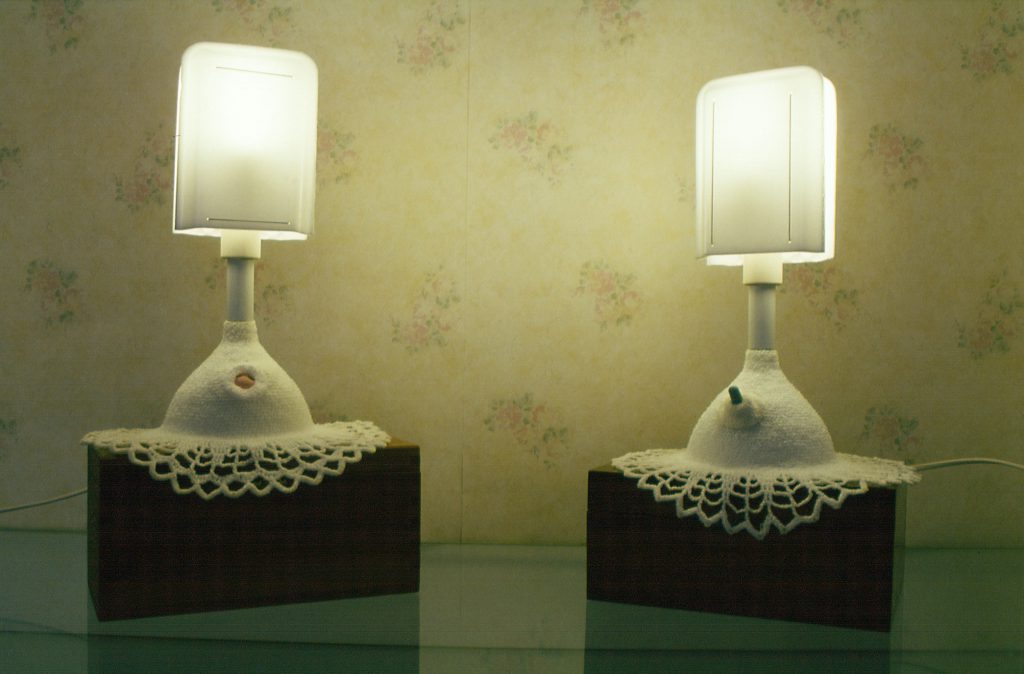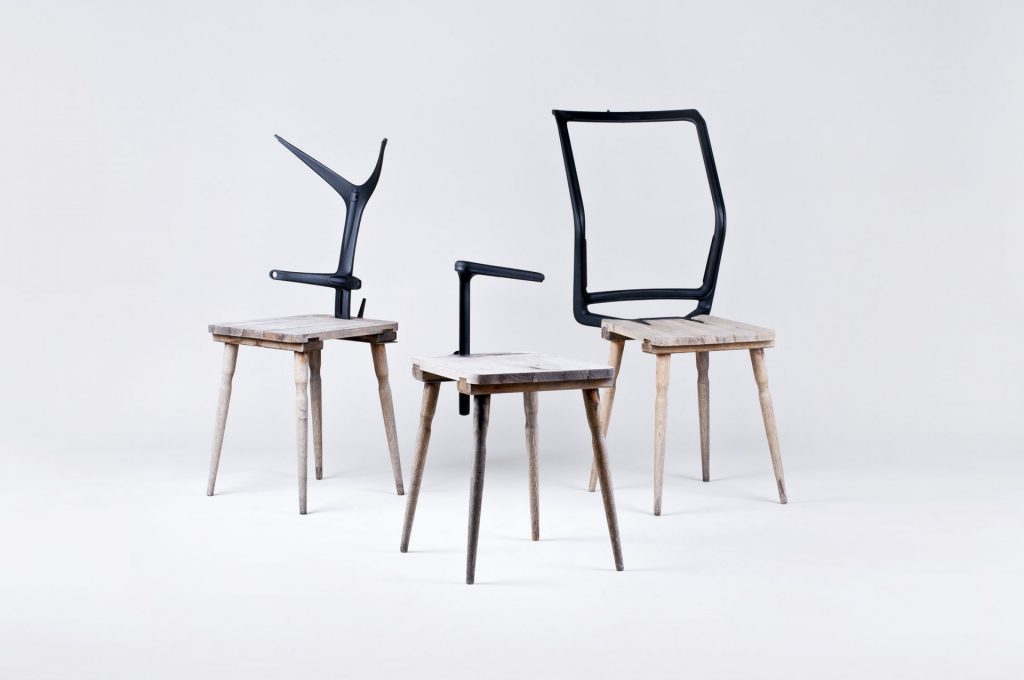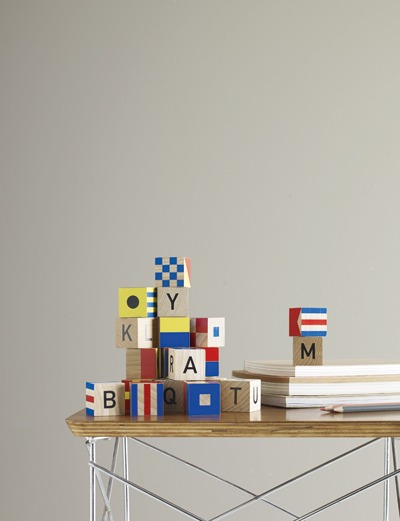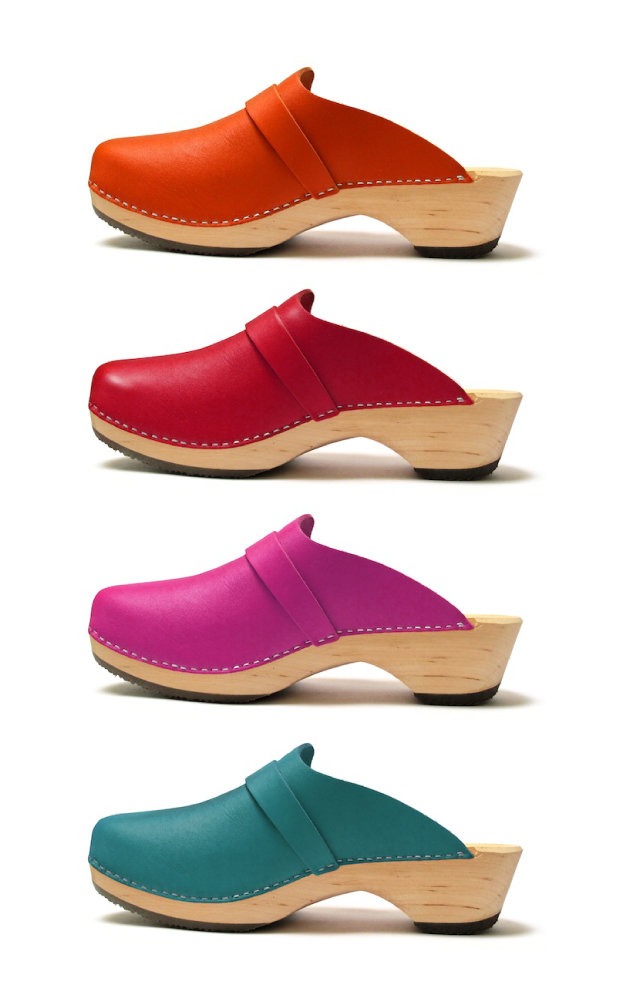To be continued
Essay about contemporary slovak design.
A classic stereotype which tends to be used for idealising the image of Slovakia is the idea of a distinctive country teeming with meadows and pastures where joyful batchas – shepherds – drive their sheep into the pen and cannot wait to eat their bryndzove halushky – typical dumplings with sheep cheese – that are waiting for them in their koliba – shed. This myth might be good as a tourist marketing, yet reality is somewhere else.
Slovakia is a country populated by 5.5 million inhabitants; its population is similar to a mid-range city in China (it is smaller than, for instance, Chinese Harbin). Industrial production was formed for the last one hundred and fifty years with a long-term focus on heavy, chemical and machine engineering as well as wood mining. From 1991 on, Slovakia becomes a destination where renowned car companies start shifting their production. More than million cars are produced in Slovakia, which makes it the world leader in the number of produced cars per capita (e.g. 350,000 cars are produced in Italy). Slovakia does not have a metropole. The capital city Bratislava has as few as 400,000 inhabitants, a rather provincial ambiance and agonizingly interrupted – by totalitarianism and New Capitalist Age – urban development. Taken altogether, these are not ideal points of departure for design.
In comparison with the Western neighbours, we cannot talk about a strong tradition in design or design schools. The history of 20th century, however, left some very vivid traces even in Slovakia which where this creative branch definitely emancipated, too. There was a powerful and respected tradition of glass-work (Lednické Rovné, Poltár glass-work factory) or textile manufacture (Kežmarok, Trenčín, Žilina) and partially, manufacture of furniture (Tatra nábytok Martin), ceramics, toys and stainless steel kitchen ware (Sandrik). Also, we may see quite some progressive efforts in the field of education: historically, it was so-called ŠUR (The School of Art Crafts) established in the interwar period whose curriculum was partly based on the principles of Bauhaus. After the World War II and communist coup d’état, there was a lack of demand for design leading to its modest development. A bigger impetus came only towards the end of 1950s. All the design and promotion departments gradually became part of manufactures. 1960s saw a relatively fair development of individual artists’ design. It was especially thanks to the boom of modernist architecture of public buildings where architects insisted on individually designed interiors. Such practice continued in the following decades of normalisation.
The change of regime in 1989 and the onset of market economy resulted in euphoria with an impact on the rising generation of designers. However, gradual bankruptcies, privatisations and destruction of manufactures made the primary enthusiasm ebb away, sucked in by everydayness. The first to go were the design departments. At the same time, new manufactures (although to a lesser extent) were founded as a reaction to the demand for contemporary furniture design; drinkware design or lighting design was also supported. Finally, previously unavailable world-known designer products started to be sold in Slovakia. The situation was also favourable for graphic design: there was an immensely growing demand for advertising design; new magazines and papers were appearing. In addition, the appeal of the profession of designer was on the rise. (In 2015, Slovakia had four colleges with the instruction of design and there are many private high schools, too.) Yet nor this fact, nor dynamic economic growth and introduction of euro (2009) could change a rather unfavourable situation for design. The reason is that it still does not have any support in the sphere of production. There are only few stories when a prototype makes it to the real world.
With the outset of new technologies from the turn of millennium came a new generation that finds work with them a natural skill. Many design graduates and little demand for their work created a special situation that – thanks to new technologies – kicked up a strong wave of emancipated small design studios that decided not only to develop, but also to realise the manufacture and sale based on slow and custom-made design. This situation is present until now, although the early enthusiasm is on the fall. The middle generation of designers is experiencing a burnout syndrome – it is not only the lack of enlightened manufacturers; their ambitions are also knocked down by the weak purchasing power of middle class, so the sales are quite limited. Occasional design markets have been helping the online sale for some years already. Open borders and free labour market in the EU help, too. Many young Slovak designers found their place abroad – in car design, textile design, design of electrical appliances, as teachers or in the field of an artist’s design.
We began the essay with sarcastic comments of the Slovak myth as a fabulous land of sheep, but, even so, this historical foundation has a vital influence on design and art craft. In the history of Slovakia, there were always two coexisting cultures: the city, multicultural (before the World War II, besides Slovaks there were Germans, Hungarians, Jews, Croats and Czechs) and folk culture. The city culture violated by ideology after 1948 has always supported the import of progressive ideas and modernist emancipation. This applied to art crafts as well as the acceptance of a designer as a profession. Slovakia (which was a part of Austro-Hungarian monarchy until 1918 and was in a common state with the Czechs from 1918 – 1992) was influenced mostly by the ideas imported from the Czech, Austrian, German and French culture and after the World War II from Italy and Russia as well as the north of Europe. The folk culture, which had historically very developed forms mainly in metalwork, woodwork, tinwork and ceramic and rich patterns of décor (each valley had a different type of ornament) was, on the other hand, accepted during the past regime (as proletarian) and several institutions were established to save it and keep it.
The most significant was ÚĽUV (Centre for Folk Art Production, dated 1945) which collected, monitored and supported folk artists, but also initiated the birth of new collections in cooperation with designers. The collections took inspiration from folk patterns responding to the contemporary requirements of the function and form. Their collections were later sold all across Slovakia in the ÚĽUV shops, thus partially cultivating people’s taste and demands. ÚĽUV exists until present times, although it no longer offers new complex collections. It is rather focused on the sale of individual artists‘ works (situated somewhere between design and craft) based on the folk motives or with use of historical techniques. The search for identity and authentic expression or context in the folk culture (Bahna) based on the local folk resources is continuously present in the design scene. The vawes are sometimes stronger and visible in different areas simultaneously and sometimes they are less prominent. Among the most interesting artists in the past are Dušan Samo Jurkovič (1868 – 1947), later sculptor Júlia Horová Kováčiková (1906 – 1978), architect and designer Viktor Holubár Holeščák (1926 – 1989) and sculptor and designer Václav Kautman (1922 – 1981). Besides Jurkovič, who died in 1947 and was more of an art-nouveau artist with a very original take on folk ornaments and typology of buildings, they all belonged to the in-house designers of ÚĽUV. Holubár Holeščák designed the interior of many ÚĽUV shops; Kautman was the designer of its first logo (1951). Their works were influenced by a modern reductive art approach inspired mainly by the Italian post-war design as well as the organic design or by Scandinavian artists Alvar Aalto and Finn Juhl.
As we said earlier, respect towards the folk culture is still present in the Slovak design. Its new stronger wave appeared on the turn of millennia. The arrival of new technologies and intensifying globalisation traditionally leads to natural tendencies turning to local, technical and authentic forms as the most precious heritage. New generations try to absorb the tradition without pathos; they are open to experiments and provocations. One of the interesting concepts after 2000 was so-called hobby design, i.e. unrefined, technically and professionally not very well mastered design. It was mostly jeweller and designer Sylvia Jokelová who dealt with this motive. Her very first collection Design from behind a Stove (2002) brought an originally sarcastic view on playing down the traditional needlework and pointed to its new potential in the age of new technologies and synthetic materials. She continued developing this motive in the coming years, too.

Sylvia Jokelová, Design from behind a Stove (2002)
We will now present some brave and non-traditional concepts of work with the tradition by looking at the examples of several selected designers and design studios from the last five years. The objects created by Ľubica Segečová and Silvia Lovasová have a truly experimental and more artistic character. Both of the art projects take an inspiration in the Slovak nature, particularly in a tree. One of them created a real-size tree (fir) folding structure made of metal; the other one made a porcelain version of a classic wooden stick for roasting in the fire in nature. While the tree is a functional interior object – a hanger, the porcelain stick is more of a decorative object – a sculpture. We witness a brave and provocative conversion of materials in both cases. Exclusive porcelain instead of throw-away wood thus became some kind of an homage to a ready-made tool. The lasting, cool and fire-proof metal substituted the vulnerability of a fir, which we may perceive also as some kind of an homage to the steadfastness of nature.
A different designer approach may be seen in the works inspired by the folk culture by the ALLT studio or Mejd studio. Allt, run by designers Peter Simoník and Elena Simoníková, prefer to work with wood, textile and stone. Their bench and shelf from the Woodstack collection was inspired by stacked unfinished wood in the warehouses: they used a similar principle by showing simple layering of planks with no special surface finish or decor while maintaining their functionality. Such lapidary features remind us of Enza Mari’s design or of the projects of the Spanish architects from Ensemble studio. The principle of assembling jigsaw puzzles was a point of inspiration for making the Cityshapes carpet. Despite recalling the city forms, the arisen drawings refer to the design rooted in the folk architecture and textile. Also, the material used – woolen felt (here combined with rubber) – is traditional for the Slovak folk production. This product found its producer in the Netherlands (www.basematters.com). There are also other objects in the Allt portfolio that is inspired by the folk production, yet rather on the level of technical process and use of traditional materials.
The Mejd studio is yet another mixed designer couple who graduated from VŠVU – Štefan Noska and Katarína Beličková. They, too, work with wood, but also clay, glass or metal. Their design is narrative – it often brings more functions together. It has a sense of humour; the shapes are temperate, yet experimental. For instance, they combine a bowl and a lamp into one object, thus creating a spatial pair. The object comes in clay as well as more exclusive brass version. In another object, they inserted a sort of a winding system into a glass light, reminiscent to the old village wells. But instead of a bucket at the end of the rope, there is a light bulb. The Allt and Mejd studios realise most of their designs by themselves in cooperation with local craftspeople.
A very interesting platform involving the tradition in the design/art is Flowers for Slovakia (Slovak University of Technology), which organises creative workshops with different topics. Their outcomes are presented in various international forums (DMY, Designblok, Bratislava Design Week). An interesting work from the first edition was Peter Simoník’s jug For Water Went a Girl audaciously combining glass and leather. Everybody’s at Home – Dana Tomečková’s bench linking Eames with a simple dull bench – stood out at the Lost &Found edition featuring VITRA where the international iconic design produced by VITRA was connected with Slovak local forms. Her object was fully functional and referred to the feeling of community between generations. Provocative in a swift postmodern manner were also Fragments – the chairs of Miro Kral.

Fragments by Miro Kral
The newest enterprise is the HRAVO platform, seeking to initiate the rise of original toys, as they are the most authentic features in the Slovak folk culture. They prepared an edition of classic wooden cubes AHOY designed by architect Igor Mark with an alphabet and maritime graphic signs and signal flags or classic toy Vlk (Top) by graphic designer Ján Šicko with an industrially designed surface. After spinning the Vlk, it makes a dynamic, even digital image.

Igor Marko for HRAVO
If we search for folk forms in the Slovak design, one should mostly start looking into the design of fashion, accessories, textile and jewels. A prominent figure in the field of jewel is Andrea Ďurianová with her tendency to define her object in a minimalist way even when she cites historical models. Textile designer Marcel Holubec creatively included a typical Slovak craft – wicker weaving – in his last collection, too. The brand Puojd‘s outspoken goal is to work with the tradition: it focuses on the artist’s design patterns they subsequently use to manufacture casual clothes. Pik Poki is a nice clog-making project of Slovak designers Kristína Hrončeková and Juraj Balog and Slovenian set designer Jasna Vastl. They turned to a Slovenian craftswoman with a long experience in making of traditional clogs and together they revive their production in the new shiny colourful versions.

Pik Poki
Finally, we should not forget about moving our bodies a little, so we will come back to the unique Slovak mountains. Particularly to the ski slopes of Central Slovakia where a new brand of Slovak custom-made free-ride skis Forest Ski arose. It is again a group of young enthusiasts with a belief in their product and effort to compete with the international brands. Even though the most vital part of skis is their function, the brand offers very self-confident products when it comes to their design. What is important is the beauty of material and attention to details.
This short and brief essay has outlined several stories from the Slovak design scene. They are neither romantic fiction, nor horror stories. They are stories of bravery, individual enthusiasm and talent.